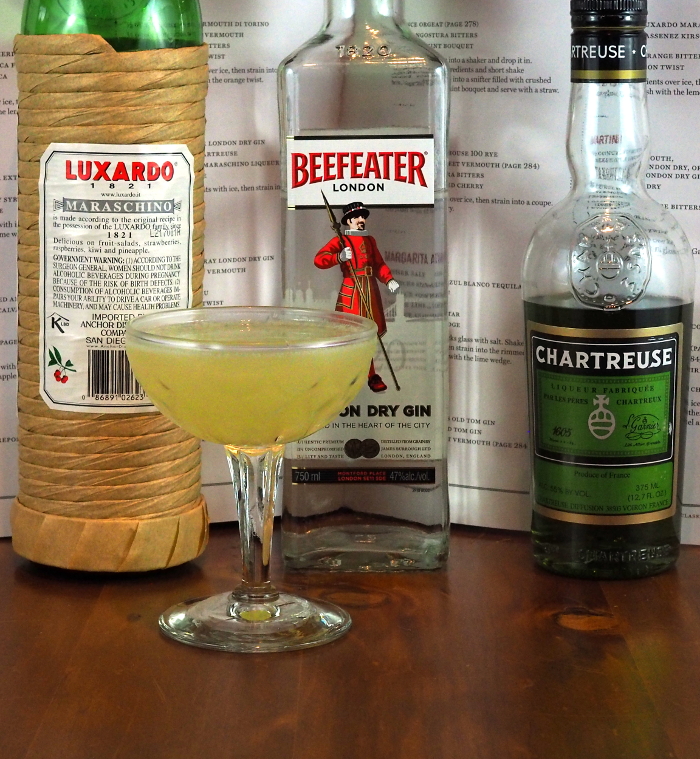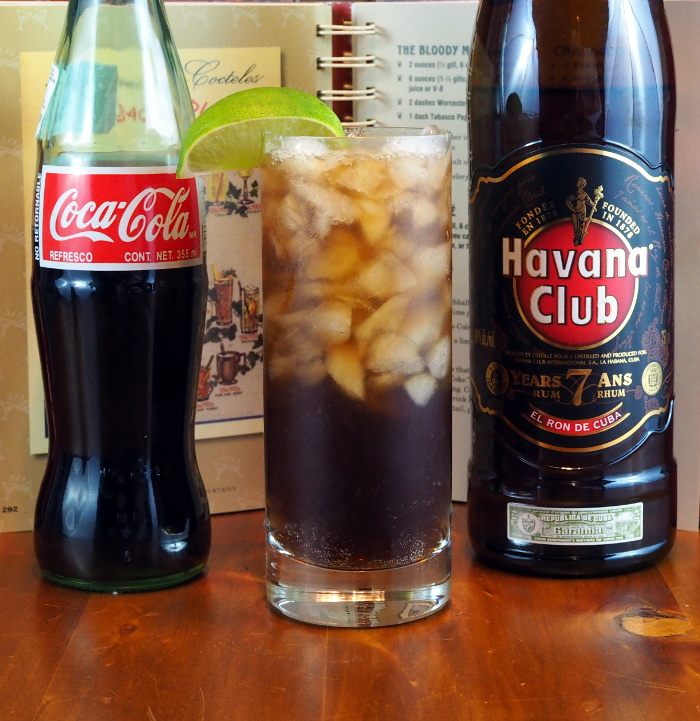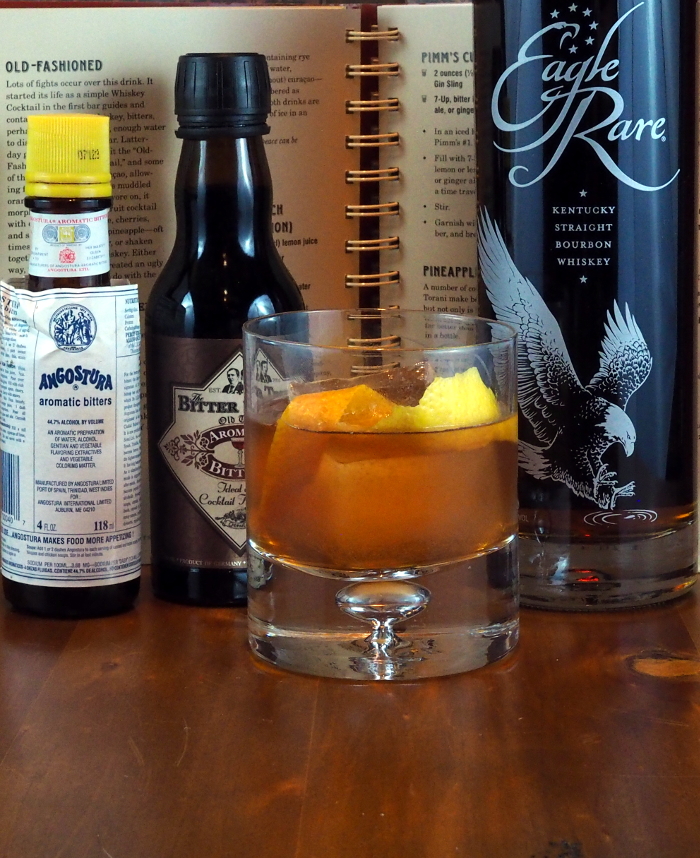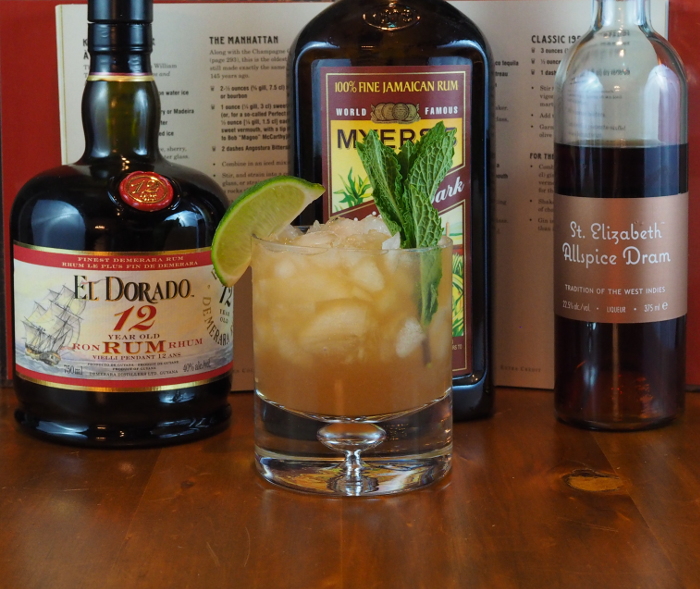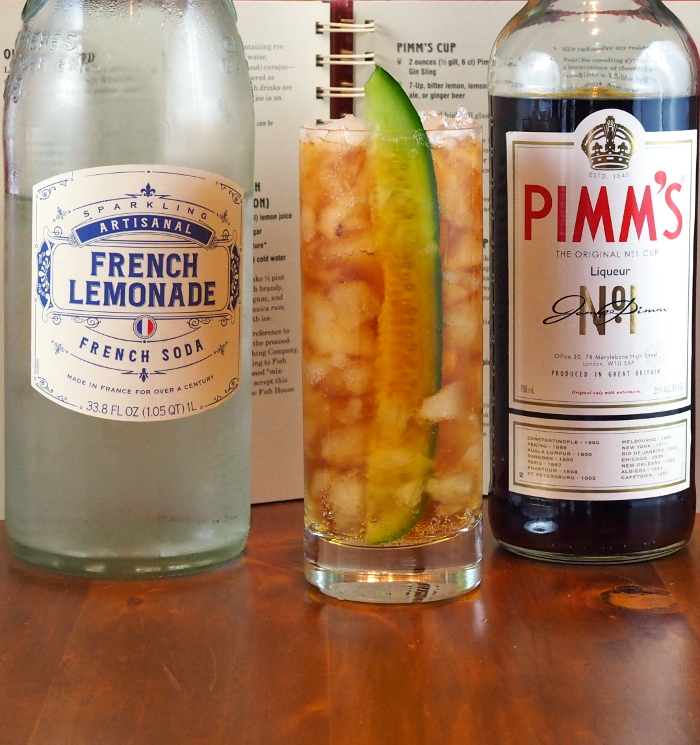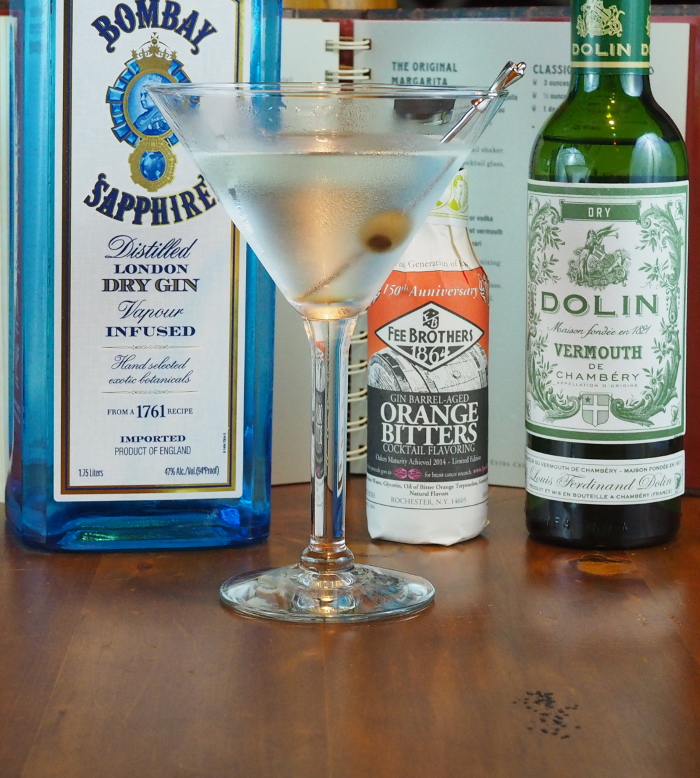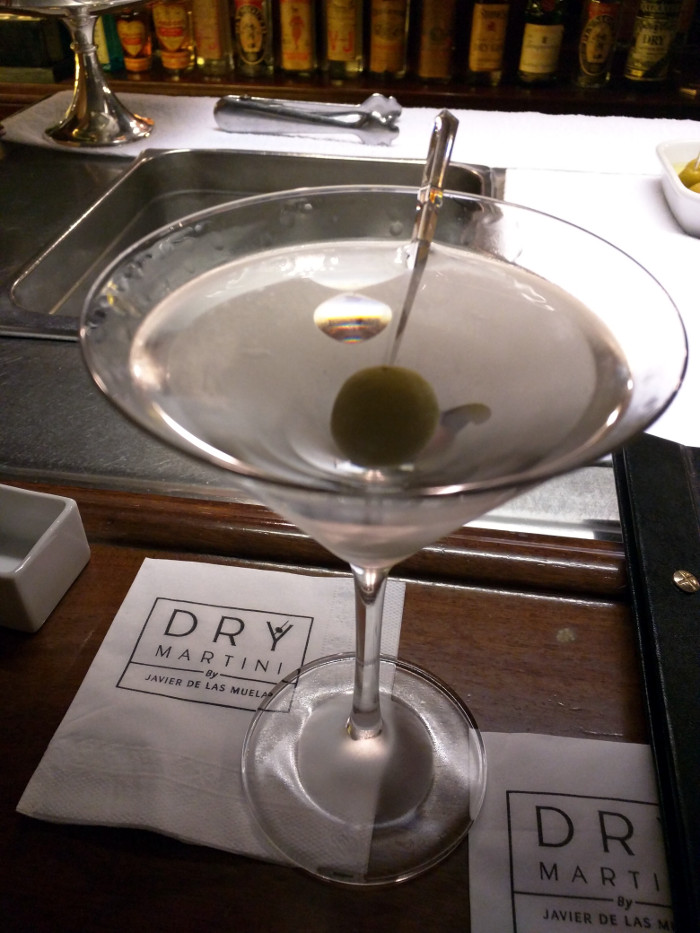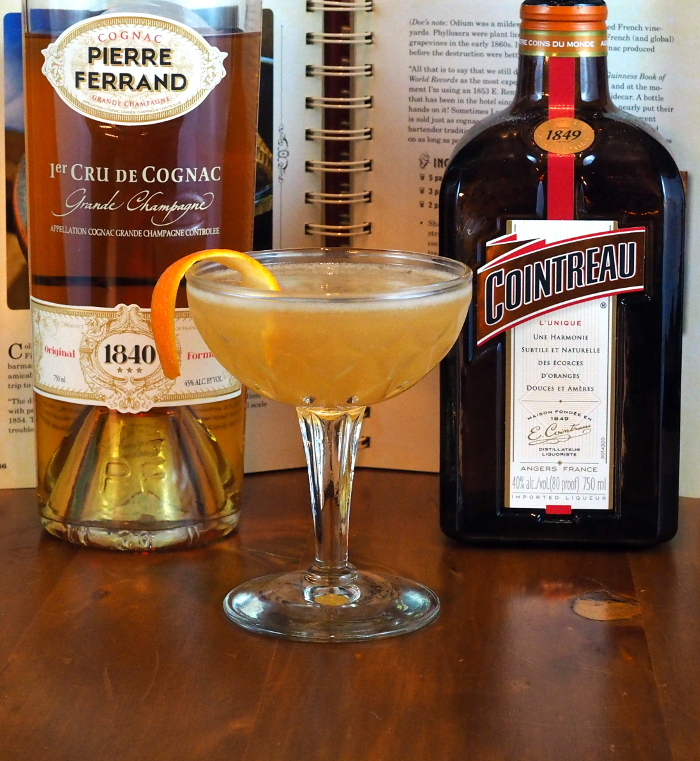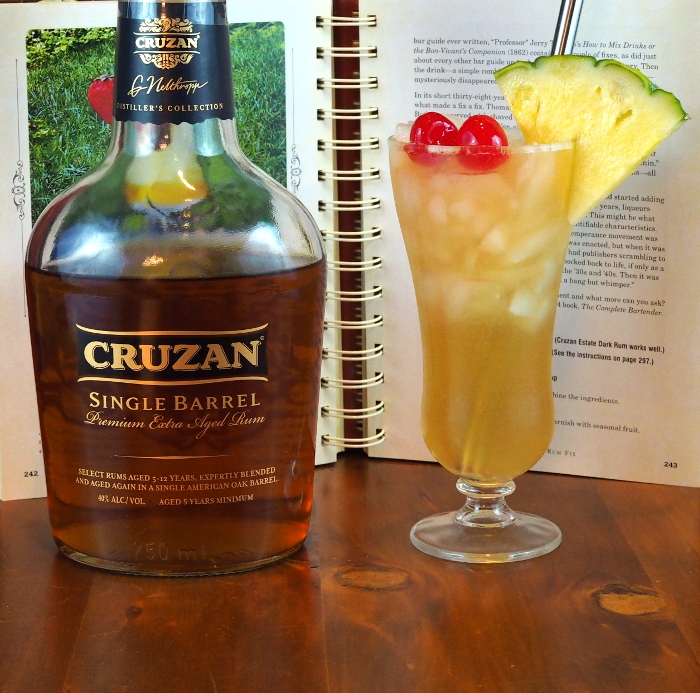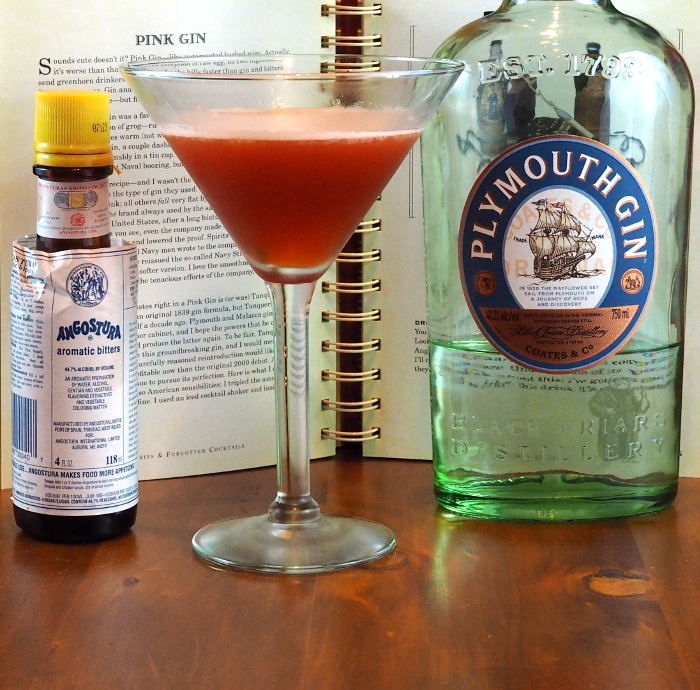Another favorite of mine, The Singapore Sling:
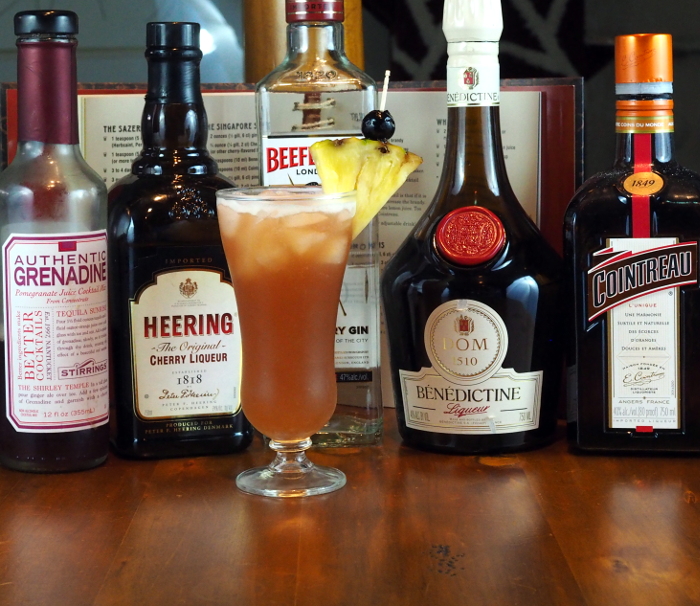
- 2.00 ounces gin
- 0.75 ounce Cherry Heering (or other cherry-flavored brandy)
- 2 teaspoons Benedictine
- 2 teaspoons Cointreau
- 2.00 ounces pineapple juice
- 0.75 ounce fresh lime juice
- 2 dashes real pomegranate grenadine
- 1 dash Angostura Bitters
- Soda water
Combine all except soda water in an iced cocktail shaker. Shake, and strain into a highball or collins glass with a couple of lumps of ice. Top with soda water. Gernish with a cherry, a pineapple slicem, and an orange wheel.
One of the things I like about the Appendix in Dr. Cocktail’s book is that a lot of the recipes are true classics, and thus are very tasty. The Singapore Sling is no exception.
I am still looking for a definitive list of vintage cocktail terms. For example, while now the term “cocktail” refers to almost any drink with spirits, a cocktail used to mean spirit, water, sugar and bitters. A sling was spirit, water, sugar and citrus. A flip contained an egg. A fizz contained something “fizzy” like soda water, so could this be the Singapore Fizz?
The Death & Co. recipe leaves the soda water out entirely.
- 1.50 ounces Beefeater London Dry Gin
- 0.50 ounce Cherry Heering
- 0.25 ounce Benedictine
- 0.25 ounce Cointreau
- 2.00 ounces pineapple juice
- 0.50 ounce fresh lime juice
- 0.50 ounce real pomegranate grenadine
- 1 dash Angostura Bitters
Short shake all the ingredients with 3 ice cubes, then strain into a highball glass filled with ice cubes. Garnish with a pineapple and cherry flag.
I made the Death & Co. version, since that is what made friend Justin made for us in one of his cocktail classes. It is very tasty. Dr. Cocktails version is a bit larger, and as I still have some pineapple juice around, I plan to make it again.
Now the Singapore Sling is a descendant of the Straits Sling. As I mentioned in that article, I used to go out with my friends Nick and Nora to a restaurant in Raleigh, NC, that was known for the Hang Chow Sling, named after the restaurant.
Fond memories are the best addition to any cocktail.
Notes: While most vintage cocktail lovers make their own grenadine, I’ve found an acceptable bottled version in Stirrings.
Rating: 5/5

